Dan (not Daniel, just Dan) Wakefield was many things: a journalist, a novelist, a screenwriter, an essayist, a critic, a lecturer, a reformed alcoholic, a divorcee, a godfather, and a church-goer (and then an atheist, and then a church-goer once more). A man who seemingly lived many lives in one, the 91-year-old was able to say that though writing was the main focus of his life, he could pass with “no regrets.”
Dan achieved quick success upon his graduation from Columbia University in 1955, and for good reason. Starting out as a journalist, he wrote a great number of essays, stories, and articles for various well-known magazine publications. But before long, his talent brought him to Mississippi to cover Emmett Till's murder trial, a big moment for the civil rights movement, and Dan's niche was discovered.
He went on to write novels, essays, and eventually screenplays (based on his novels) about his philosophies and reflections, on events from the civil rights movement to Spanish Harlem, the Vietnam war to the aftermath of the Korean war, WWII to Hollywood, and the list goes on. While it could be argued that his affinity for deep reflection is likely the reason he struggled so much with substance abuse, his religious faith, and relationships, he was eventually able to turn his life around and use that skill to his advantage.
As Dan seemed to live largely in a meditative state (write, read, reflect, repeat) it's no wonder that he was able to produce the plethora of diverse and thought-provoking pieces that he did. While the books below are only a small representation of his incredible career, we hope you'll join us in remembering his journalistic genius by reading along.
Dan Wakefield Books
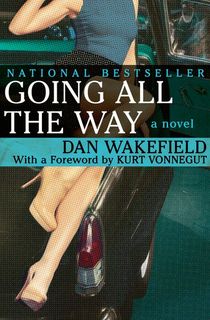
Going All the Way
Willard “Sonny” Burns and Tom “Gunner” Casselman, Korean War vets and former classmates, reunite on the train ride home to Indianapolis. Despite their shared history, the two young men could not be more different: Sonny had been an introverted, bookish student, whereas Gunner had been the consummate Casanova and athlete—and a popular source of macho pride throughout the high school. Reunited by the pains of war, they go in search of finding love, rebuilding their lives, and shedding the repressive expectations of their families.
As Sonny and Gunner seek their true passions, the stage is set for a wounded, gripping account of disillusionment and self-discovery as seen through the lens of the conservative Midwest in the summer of 1954. Rendered in honest prose, national bestseller Going All the Way expertly and astutely captures the joys and struggles of working-class Middle America, and the risks of challenging the status quo. Author Dan Wakefield crafts this enduring coming-of-age tale with fluidity, grace, and deep humanity.

Home Free
When his foxy professor/girlfriend kicks him out of her apartment, perennial college student Gene Barrett sets off on a road trip in search of a place he can call home. He ventures from Boston to Maine to Iowa City, ultimately making his way to the “last resort” of California’s Venice Beach. Experimenting with LSD, hash, and heroin, and encountering rock stars, draft dodgers, and natural food store proprietors living off the land, Gene zigzags through a cross-section of 1960s American counterculture.
More than a freewheeling jaunt through the sixties, though, Home Free sheds light on the universal desire for love and belonging. Amidst the haze of drugs and free-loving hippies, Gene is forced to look inward and face his deeply human flaws—because eventually, his life will depend on it. With national bestselling author Dan Wakefield’s trademark fusion of gritty, journalistic prose and richly evocative language, Gene’s story is an engaging, somber meditation on self-awareness, responsibility, and growing up.
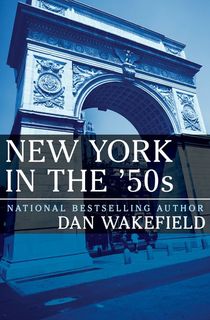
New York in the '50s
National bestselling author Dan Wakefield first came to New York City in 1952 with the intention of receiving a proper literary education on the ivied campus of Columbia University. An equally enlightening experience, he quickly found, was hiding in the smoky bars and cafés of Greenwich Village frequented by the most talented writers of the fifties, including James Baldwin, Joan Didion, and Allen Ginsberg. Wakefield recounts drinking at the White Horse Tavern, Dylan Thomas’s Village haunt, as well as the offices of Esquire and the Nation, capturing rare, intimate moments of spirited camaraderie between some of the most influential artists of their generation.
Like Hemingway’s recollections of 1920s Paris in A Moveable Feast, New York in the ’50s showcases a city in its artistic heyday, replete with Wakefield’s remembrances of brushing shoulders with literary icons such as Jack Kerouac and Norman Mailer, and watching Thelonious Monk play jazz at the Five Spot Café. Wakefield’s experience as a journalist and chronicler of Americana allows him to capture the subtleties of a decade of unparalleled artistic expression.
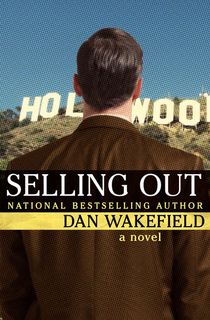
Selling Out
Literature professor Perry Moss has slowly amassed it all: a steady job at Haviland College in southern Vermont, a successful writing career, and a beautiful wife, Jane. But everything changes when a television exec contacts Perry about turning one of his short stories into a network series, and he and Jane leave the comforts of the Northeast to give it a shot in Hollywood. The pilot episode a hit, Perry becomes infatuated with his glamorous new lifestyle of swimming pools, sultry actresses, and cocaine-fueled parties. He’s willing to do anything for success in Tinseltown—even if it threatens to poison his marriage and send his wife packing.
National bestselling author Dan Wakefield, who is no stranger to Hollywood—he created the NBC series James at 15 in 1977—fills Perry’s vividly illustrated escapades with insider nods and quirky asides that make for a gripping read. With Wakefield’s signature blend of wit and compassion, Selling Out balances laugh-out-loud humor with great emotional depth.
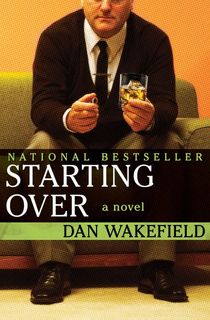
Starting Over
When Phil Potter decides to divorce his wife, Jessica, after a few difficult years, he imagines he’s in for a wild jaunt through the sexually liberated 1970s. But his new start—Phil has also left behind his job in PR for a teaching gig at a junior college—is more solitary drinking and TV dinners than raucous orgies. Even the women he does manage to connect with are equally disaffected with their own divorces or failing marriages, and Phil begins to understand the harsh, though often darkly funny, realities of starting over and searching for love the second time around.
Capturing both the excitement and struggles of feminism and the sexual revolution, Starting Over depicts the pleasures and pitfalls of dating in the seventies with humor and a deep understanding of how relationships work—or, more commonly, don’t work. Replete with spot-on cultural references and rendered under Wakefield’s careful journalistic eye, Starting Over is a stunning reminder of the hardships of love in the modern age.
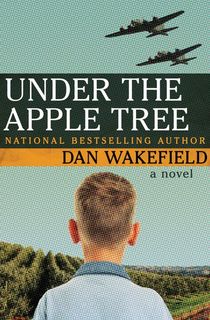
Under the Apple Tree
At the height of World War II, Artie Garber turns eleven years old in his hometown of Birney, Illinois. When his older brother, Roy, joins the US Marines, Artie is left to defend the home front—as well as Roy’s high school sweetheart, Shirley. Without the guidance of his beloved big brother, Artie resorts to reading advice in Collier’s on how to identify spies and search for German aircraft over the lush fields of Illinois. As Artie works to protect Shirley—a lost cause, despite the cheerleader’s best efforts—he must come to grips with his own burgeoning sexuality as he steps cautiously toward adulthood.
Rendered in stunning, peeled-back prose, Under the Apple Tree realistically depicts one boy’s loss of innocence and the devastating effects of war felt far beyond the battlefield.
Featured image: Autumn Studio / Unsplash
